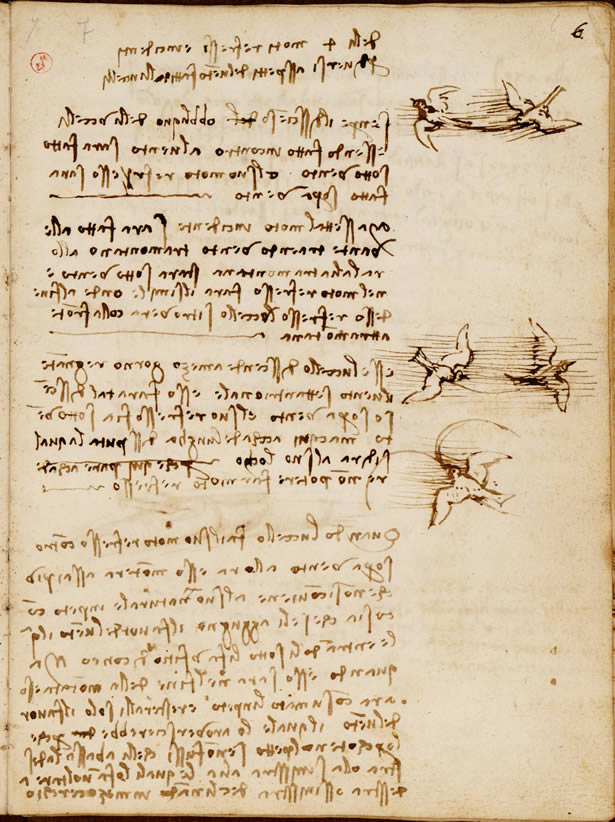Fol. 6r
«quando l'uccello si muoverà controvento, salirà assai di più di quanto corrisponda al suo impeto naturale in quanto gli si aggiunge l'aiuto del vento che entrandogli al di sotto gli farà da cuneo. Ma quando esso sarà al termine della salita e avrà esaurito la spinta e gli resterà solo il favore del vento, questo lo rovescerebbe percuotendolo nel petto se non fosse che egli abbassa l'ala destra o la sinistra, virando a destra o a sinistra e scendendo in semicerchi»
(When the bird moves against the wind, it ascends much higher than the distance to which its natural impetus corresponds, inasmuch as it has the addition help of the wind, which, entering beneath it, acts as a wedge. But when its ascent is at an end, and it has exhausted its own thrust and there remains only the favour of the wind, this would turn it over, beating against its breast, if it did not lower its right or left wing, veering to the right or to the left and descending in a semicircle.)
NOTE. For each page of Leonardo’s Codex we provide a brief summary, with the quotation of one that page’s most significant passages edited in modern Italian, with an English translation.
translation by Kim Williams

